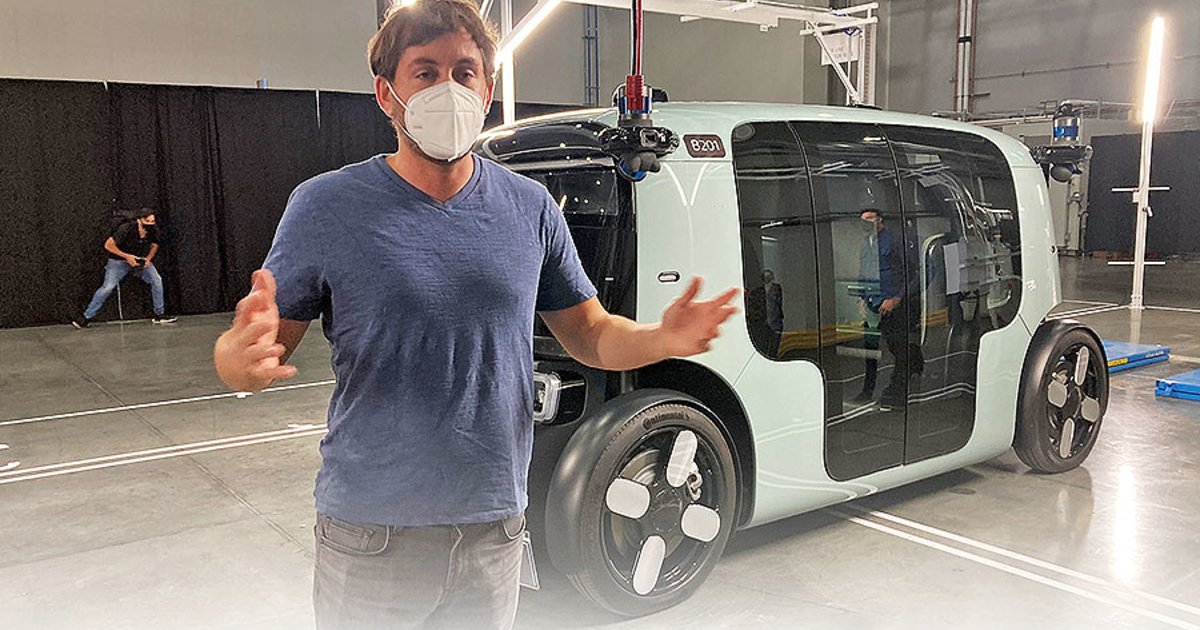
FREMONT, Calif. — Amazon-owned self-driving tech developer Zoox is getting ready to join a field of companies carrying passengers in autonomous vehicles.
While the company isn’t saying when it will begin commercial operations — “soon,” says a co-founder — it may be the first to design and deploy a bespoke robotaxi for operations on U.S. public roads.
As the company readies for operations, it previewed its VH6 vehicle on the streets of Silicon Valley last week.
The Foster City, Calif.-based company is driving into an increasingly crowded field.
Waymo introduced limited service in the Phoenix area in 2017 and Motional partnered with Lyft to offer rides in its AV in Las Vegas the following year. Cruise launched a ride-sharing service in San Francisco this year, while Argo has started testing its AVs in Miami in preparation for a partnership with Lyft this year. Almost all except Zoox have partnerships for package delivery.
While most robotaxi developers are relying on retrofitting existing production vehicles, Zoox, which plans initial markets in San Francisco and Las Vegas, is mirroring the strategy of General Motors-backed Cruise and plans to build its own vehicles at a plant in Fremont, Calif., within sight of Tesla’s factory, designed to carry human passengers.
The toaster-shaped VH6 is roughly the length of a full-size sedan but taller. It has four-wheel steering to move in directions not available to AVs based on production cars. The VH6 can drive forward or backward at speeds up to 75 mph. Twin electric motors and dual 133-kWh battery packs power the wheels on each axle. They are encased in a detachable framework for service or replacement.
Large, sliding barn-style doors allow passengers to get in and out. Passengers sit in what Zoox calls a “carriage style” configuration, two to a side.
“We focused on what it takes to build a small vehicle that still has way more room inside than the traditional car,” Zoox Chief Technology Officer and co-founder Jesse Levinson told Automotive News.
The VH6 has a sensor suite at each top corner as well as other sensors and signaling devices arrayed around the outside. For example, a line of small beam-forming speakers at each end of the body warn pedestrians and cyclists of the VH6’s presence using a precisely aimed audible alert.
Zoox has built dozens of the VH6 at the Fremont plant but has the capacity to ramp up to tens of thousands, Levinson said. He declined to comment on exactly how many will be produced.
“Because they’re robotaxis, we get better utilization out of each one of these than you would a car and the unit economics are much better,” Levinson said. “So we don’t have to make as many of them.”
He said Zoox can afford to spend more on the assembly process to reduce investment in tooling.
“But it’s not just about saving money upfront; it’s also about recognizing that we are going to learn things as we get these vehicles out in public and can improve them,” he said.
Building the VH6 from the ground up gave Zoox the opportunity for it to fit within the current U.S. regulatory framework — without exemptions. “And being the first one to do that,” Levinson said.